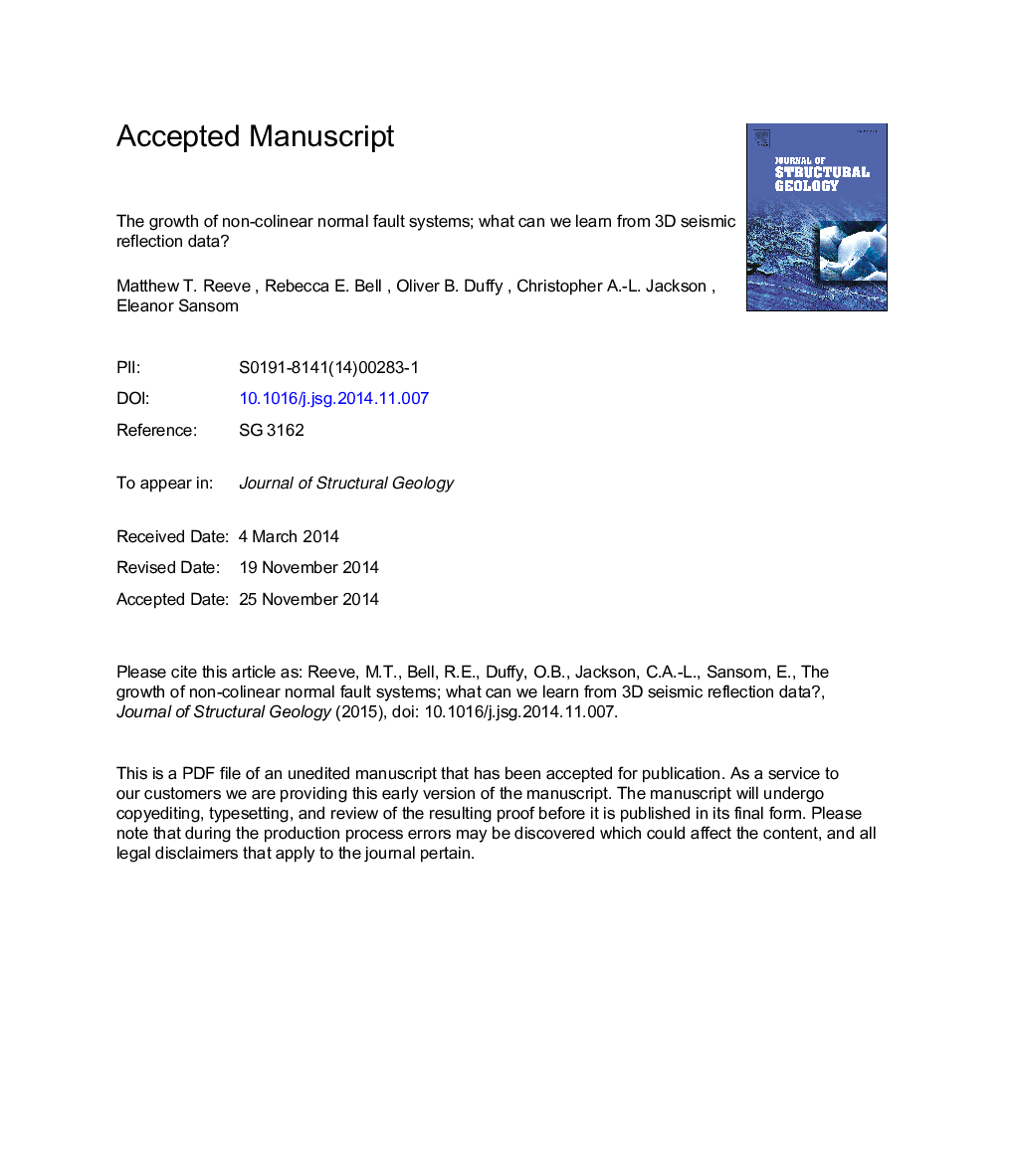| Article ID | Journal | Published Year | Pages | File Type |
|---|---|---|---|---|
| 6444816 | Journal of Structural Geology | 2015 | 47 Pages |
Abstract
Many rift zones exhibit a range of fault orientations, rather than simple colinear faults that strike orthogonal to the inferred least principal stress. The formation of non-colinear fault sets has implications for assessing rift-zone kinematics, as well as determining palaeo-stress state in extensional basins. Using 3D seismic reflection data, we deduce the likely mechanisms responsible for the formation of a population of non-colinear faults in the Måløy Slope area of the northern North Sea. Three basement-displacing fault populations exist on the Måløy Slope; (i) large (>1 km throw), N-S-striking faults, (ii) smaller (<250 m throw) N-S-striking faults and (iii) small (<250 m throw) NE-SW-striking faults. All were initiated in the Middle Jurassic. Coeval growth of these fault populations, and the apparent correlation between the NE-SW faults and a NE-SW-trending gravity and magnetic anomaly high lead us to suggest that the NE-SW faults are the result of deflection of the otherwise E-W-orientated least principal stress by NE-trending intrabasement weaknesses. Our study's results have implications for the large-scale kinematic evolution of the North Sea, arguing that major rotations in extension direction are not required to generate multiple fault sets locally or across the rift. This study also highlights the importance of using borehole-constrained 3D seismic data as a tool in understanding non-colinear fault growth, and its broader implications for regional tectonic history.
Related Topics
Physical Sciences and Engineering
Earth and Planetary Sciences
Geology
Authors
Matthew T. Reeve, Rebecca E. Bell, Oliver B. Duffy, Christopher A.-L. Jackson, Eleanor Sansom,
